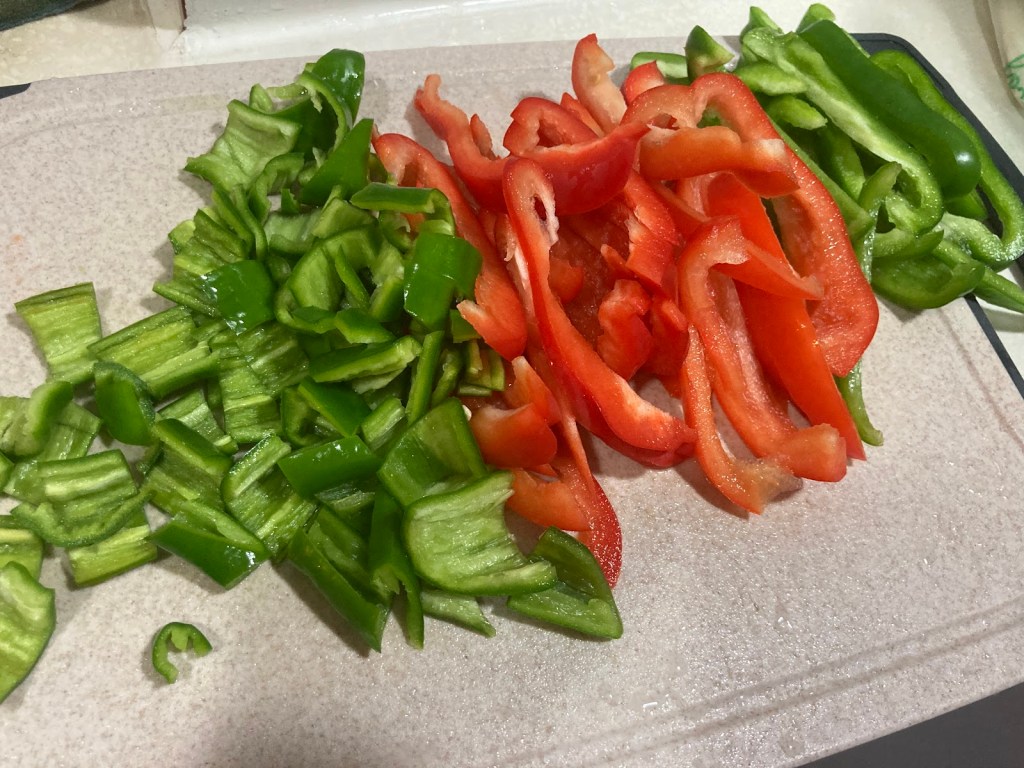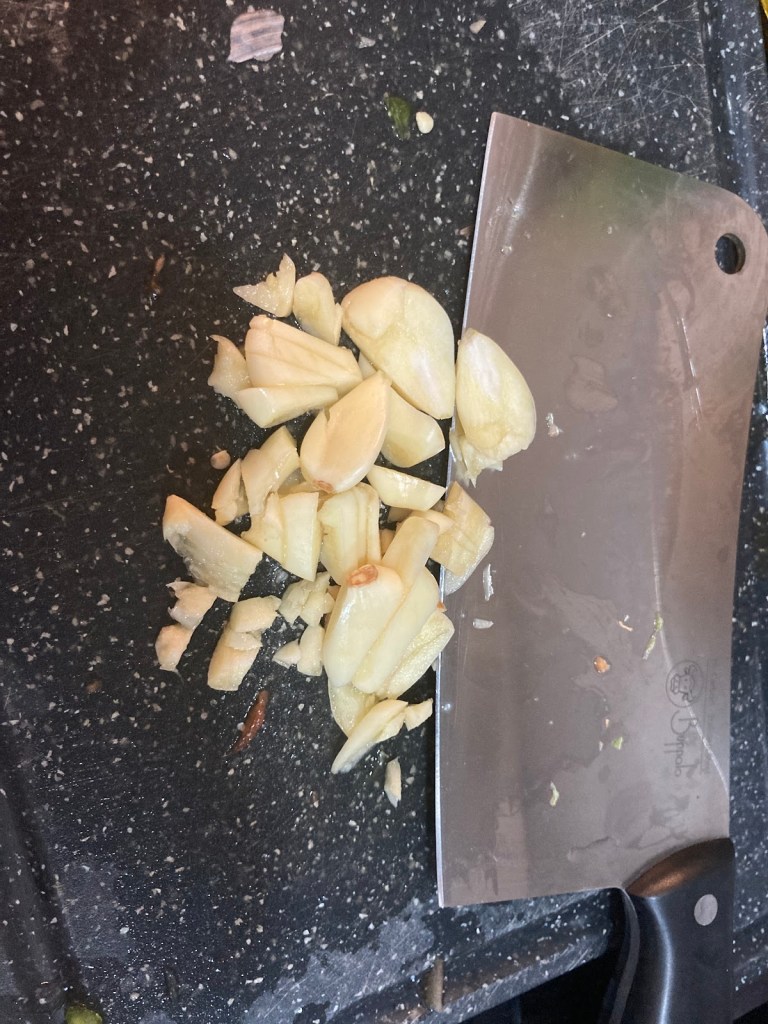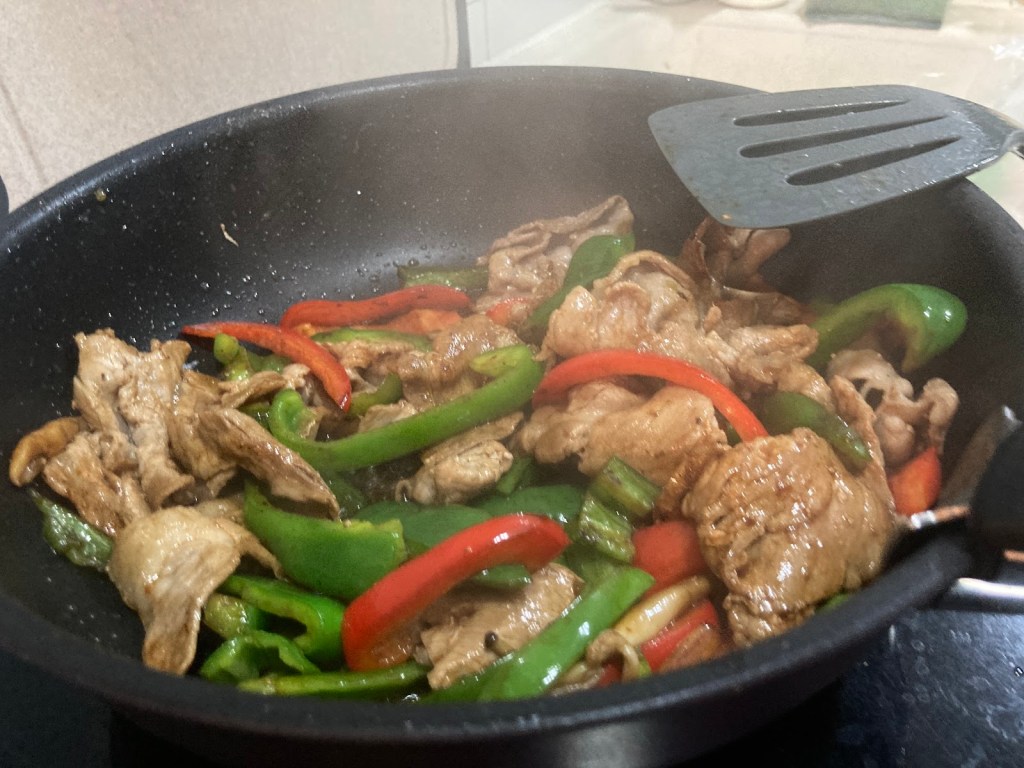A story about the pursuit of Wok Hei, and how a home cook came to be at peace with the limitations of a home kitchen.

Time: 2/5, for each batch
Stir fries happen quickly, as long as you’re only making one batch.
Effort: 3/5
Requires some prep work, as well as moving and making decisions under some time pressure
Learning the limits
You’ve probably seen videos of chefs stir-frying on stove tops that look and sound like jet engines (or chefs jerry-rigging their own Frankenstein contraptions – I love you, Alex, you crazy man). Stir fries require very high heat output in order to caramelize before the food starts to expel water. When done well, it produces a host of unique and wonderful aromas and textures that is referred to by the term wok hei (鑊氣). Besides taste and smell, you can visually confirm that you’ve achieved wok hei by closely examining the bits of food for crispy, slightly charred edges.
I love a good stir fry, and I experimented to see if stir frying can be incorporated into a meal prep game plan. Stir frying is difficult enough with the equipment available in a home kitchen, and harder still to do in large batches. But, I hypothesised that if I pre-cooked each component of the stir fry separately as my rice cooks, I could time the whole thing so that I could put multiple portions together quickly when my rice is done.
Long story short, I was wrong. Stir fries don’t scale like roasting or stewing. There’s no way to shorten the duration of heat exposure required for each batch of ingredients to develop their wok hei. If you’re making n portions of stir fries you’re gonna have to put in n amounts of time.
It was still delicious though. Like a friend of mine once insightfully remarked, one of the benefits of learning to cook is learning what’s worth the effort of making yourself, and what’s best left to the pros. Even if it didn’t turn out quite the way I expected, I’m glad I tried to meal prep-ify this stir fry. Now I know stir fries are best left as an occasional weekend treat, and very much worth paying for.
2024 update: having made this several times over the years, I found out there were better ways to cut the peppers to get more wok hei. I’ve also come up with a much more potent stir fry sauce – check out the New Improved Pork and Peppers post for more.

Dramatis Personae
Meat
Use any protein, as long as it is thinly sliced to let it cook quickly. I used pork, but any meat would work (beef, for example, would be fantastic).
A word on the ‘thinly sliced’ aspect, however. I got these supermarket packets of pork shaved razor thin by a deli slicer (the kind intended for hot pot, which works really well for meal prepping rice bowls), which made them super vulnerable to being overcooked despite my best efforts. If I were to make this again I would use slice the meat by hand.
Vegetables
Any combination of spicy and mild peppers will work. I used mainly bell peppers with some mildly spicy ones thrown in. Any crunchy vegetable, such as asparagus or celery, would be a fine substitute.
I had some mushrooms left over which I included at the last minute. Stir fries are a great way to use up your leftovers and exercise your creativity.
Aromatics
You can’t have a stir fry without garlic. I also included some Szechuan peppercorn powder that I’ve been putting it into just about everything, much to my taste buds’ delight. The stir fry would end up tasting better if you salted each component as you added it to the pan, but I was trying to save time and effort so I hoped the sauce would cover all my seasoning needs.
Sauce
I kept it simple this time with just soy sauce, which worked well enough. Each individual piece was thin enough that a coating of sauce the outside was able to season it decently. I didn’t bother with a slurry as the amount of soy sauce involved is so little that it would reduce quite quickly from the high heat involved. Some oyster sauce would play really well with this too, as would a splash of vinegar plus some sugar.
Executive summary
- Get rice going. Wash and cut vegetables into small pieces.
- Pan on the highest heat. Stir fry the pork briefly in some oil, reserving when they’re about 70% done.
- Re-oil the pan if needed. Stir fry vegetables briefly, for 1 to 2 minutes, along with spices if using any.
- Return the pork to the pan. Stir to combine, then add the sauce.
- Stir to combine sauce with ingredients, and serve.
If you somehow want to replicate my folly in trying to meal prep a stir fry, repeat step 2 until you go through all your meat, then repeat step 3 until you go through all your vegetables. Proceed to steps 4 and 5, working in batches again.
Play by Play


A mixture of sweet and spicy peppers. You could go all sweet or all spicy, or anywhere in between. The mushrooms were a last minute addition, because the market was selling huge piles of them at ridiculously cheap prices just before closing.


Things are gonna happen fast, so you gotta do your prep. Strips tend to work well in a stir fry, because they’re a shape conducive to being picked up by a pair of chopsticks.


Wok on the highest heat where it will stay for the remainder of the cooking. Pork goes in first with some oil, briefly. Reserve before it’s entirely cooked through – notice there’s still some pink when I pulled it from the pan. It will go in a second time and get some more heat.


Add new oil. Vegetables next, along with any spices to let them bloom in the hot oil. This will deglaze any fond the meat left behind in the pan and make for an easier cleanup later. After a minute or two, return pork to the pan and stir fry briefly again.

Combine with sauce and we’re done. There’s so much residual heat in the pan that the soy sauce reduced itself into a glaze pretty quickly.

Bonus tip: pack rice into a bowl before inverting it onto a plate for a tight, neat presentation. Bon appetit!
Thanks for subscribing! See you around.
Keep browsing by categories, or by tags:
Beef Blog Broccoli Cabbage Carrots Cast iron Cheese Chicken Curry Dashi Date Night Dried scallops Dried shrimp Eggs Fish and seafood Garlic Ginger Glass noodles Gochujang Honey Miso Napa cabbage Onion Oven Pasta Pork Potatoes Salmon Sesame oil Shiitake mushrooms Shrimp Soup Sous Vide Steaming Stewing Stir fry String beans Sweet potatoes Teriyaki Tofu Tomatoes Vacuum cooker Vegetarian Yogurt Zucchini
